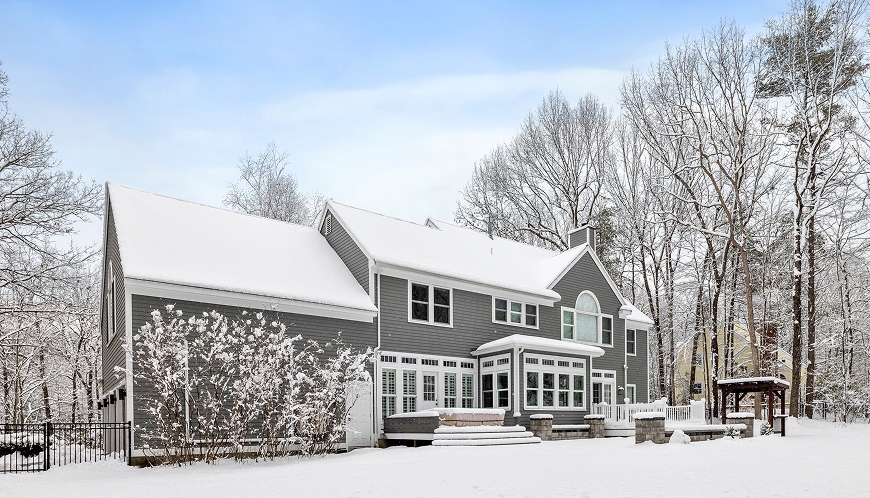Looking back‚ and ahead‚ as spring turns to summer

Every year in January, we take a look at what’s been going on in the housing market and mortgage industry and try to pick some trends that we think will continue into the new year. Some years are easier to predict than others (2020, anyone?), but we’ve been able to identify many of the stories that go on to shape the market in the months ahead.
That track record has continued this year, as we spotted some trends coming. Other trends, however, threw us a curveball. It will not qualify as a spoiler alert to tell you now that the path that mortgage rates would take over the last six months confused a lot of experts. As mortgage rates are so central to everything housing, let’s start there.
Mortgage rates back on the rollercoaster
At the end of 2023, the Federal Reserve was signaling plans to start cutting their interest rate soon, as the feeling was that their policies were getting inflation under control. This was potentially good news, and mortgage rates started to come down as 2024 started.
But do you know what didn’t start coming down? Inflation.
Over the last few months, the Fed has watched as all indications suggest that inflation is not yet under control. They have kept their rate steady, with the hope that doing nothing will start to cool inflation. But the longer that the Fed has held steady, the higher mortgage rates have floated.
In January, we quoted a few economists who believed that the Fed’s rate may come down in the spring. That hasn’t happened yet. In fact, those same economists now think we may not see a Fed rate cut until the fall.
If that happens, that may mean mortgage rates won’t fall either. Mortgage rates don’t exactly follow what happens with Fed’s rate, but it is a good indicator for the direction that mortgage rates will head. So, we’re all going to be keeping an eye on the Fed.
Strategies for a lower mortgage rate
The national average rates that you see quoted in news articles are not always what a loan officer will quote when you start the pre-approval process. Not only are there personal factors that will affect your rate (like your credit score), but your loan officer may be able to offer you special programs that can help you get a lower mortgage rate.
Here are a few that we offer:
- RateReduce: This temporary buydown allows you to keep your payments low with the help of an upfront deposit from the seller at closing. This allows your mortgage rate to essentially be “bought down” for a specified period of time. We offer three different types RateReduce programs to help you save on your monthly payments.*
- Adjustable Rate Mortgage (ARM):ARMs offer the potential for lower monthly payments for the first few years of the loan. With an initial fixed-rate period (usually for five, seven or 10 years) featuring a low introductory rate, it is followed by a variable-rate period for the remainder of the loan.
- Paying Points: You can lower your mortgage rate by paying a little more at the beginning of the loan. This is known as buying down the rate or paying points. You pay your lender extra money up front — on top of your closing costs and down payment — and in return, they will reduce your mortgage rate. This could save you thousands over the life of the loan.
No matter what happens with mortgage rates, we may be able to help you get a lower rate.
Listings have gone up
While mortgage rates have been trending up, so has the supply of homes for sale. And that’s a good thing. More homes for sale means that you’re more likely to find the one you want. It also means that the competition won’t be as fierce, and that home prices could cool off.
At the time of this writing, Altos Research reported that home listings had increased 31% from the same time in 2023. We also saw a 3% increase from the week before, a number higher than any during 2023.
In January, we noted that higher mortgage rates could lead to more homes for sale. It turns out that that’s exactly what has happened. The higher rates have reduced demand, so buyers aren’t snatching up homes as quickly as they have in the last couple of years. Sellers are also more likely to slash their asking prices when they don’t sell their home.
This increased inventory of home listings is not just attributable to higher rates, however. New home construction has picked up, as home builders recognize the need for more homes. Not to mention the normal reasons that people have to move, reasons that were depressed during the height of the pandemic.
"Home sales have lingered at 30-year lows, and since 70 million more Americans live in the country now compared to three decades ago, it's inevitable that sales will rise in coming years. Inventory will grow steadily from more home construction, and various life-changing events will require people to trade up, trade down or move to another location," predicts Lawrence Yun, Chief Economist of the National association of Realtors®.
Prices stayed hot
At the beginning of the year, it looked like home prices may cool off a little bit. Though we didn’t see home prices coming down, many observers thought that the rate at which home prices were increasing would slow down. That hasn’t happened.
For the last few months, home prices were more than 4% higher than they’d been the year before, sometimes even over 5% higher.
Higher home prices can make it harder to afford the down payment on your home. The good news is that we have many programs designed to help you. From state to federal programs to neighborhood- to occupation-specific options, both government agencies and private organizations have down payment assistance programs worth investigating. Start by talking to a local lending expert who can help you sort through your options.
Hindsight on 2024
When we look back at our 2024 preview, it’s clear that our New Year’s celebrations had us feeling optimistic. It wasn’t just us, though. Many housing market and economic experts were looking forward to mortgage rates coming down in 2024. Federal Reserve Chairman was all but saying that they’d be cutting their rates and that would have positive ripples across the economy.
That didn’t happen.
Inflation has proven to be a trickier problem to overcome than the economic leaders at the Fed thought at the beginning of the year. This has held interest rates in limbo, and higher than most homebuyers would like. Once inflation comes under control, we may see some movement on mortgage rates.
But what happens when mortgage rates come down? More homebuyers will enter the market. That’s why we recommend a strategy of dating the rate, but marrying the house. Essentially, the idea is to purchase a home that you love and can afford, then refinance if and when mortgage rates come down.
There is a lot of economic factors that are affecting the housing market right now, but that doesn’t mean that now isn’t a good time to buy. Quite the opposite. With rising inventory, you’ll have more homes to choose from than you did a couple of years ago. And home prices show no signs of decreasing anytime soon.
Work with a local lender to get pre-approved and who can help you navigate your local housing market.
Applicant subject to credit and underwriting approval. Not all applicants will be approved for financing. Receipt of application does not represent an approval for financing or interest rate guarantee. Refinancing your mortgage may increase costs over the term of your loan. Restrictions may apply.
Savings, if any, vary based on the consumer’s credit profile, interest rate availability, and other factors. Contact Rate for current rates. Restrictions apply.
* Both temporary and permanent RateReduce options are available from participating builders and sellers on select properties. The 1.5/.5 temporary buydown option is not available for VA loans.

.jpeg)


